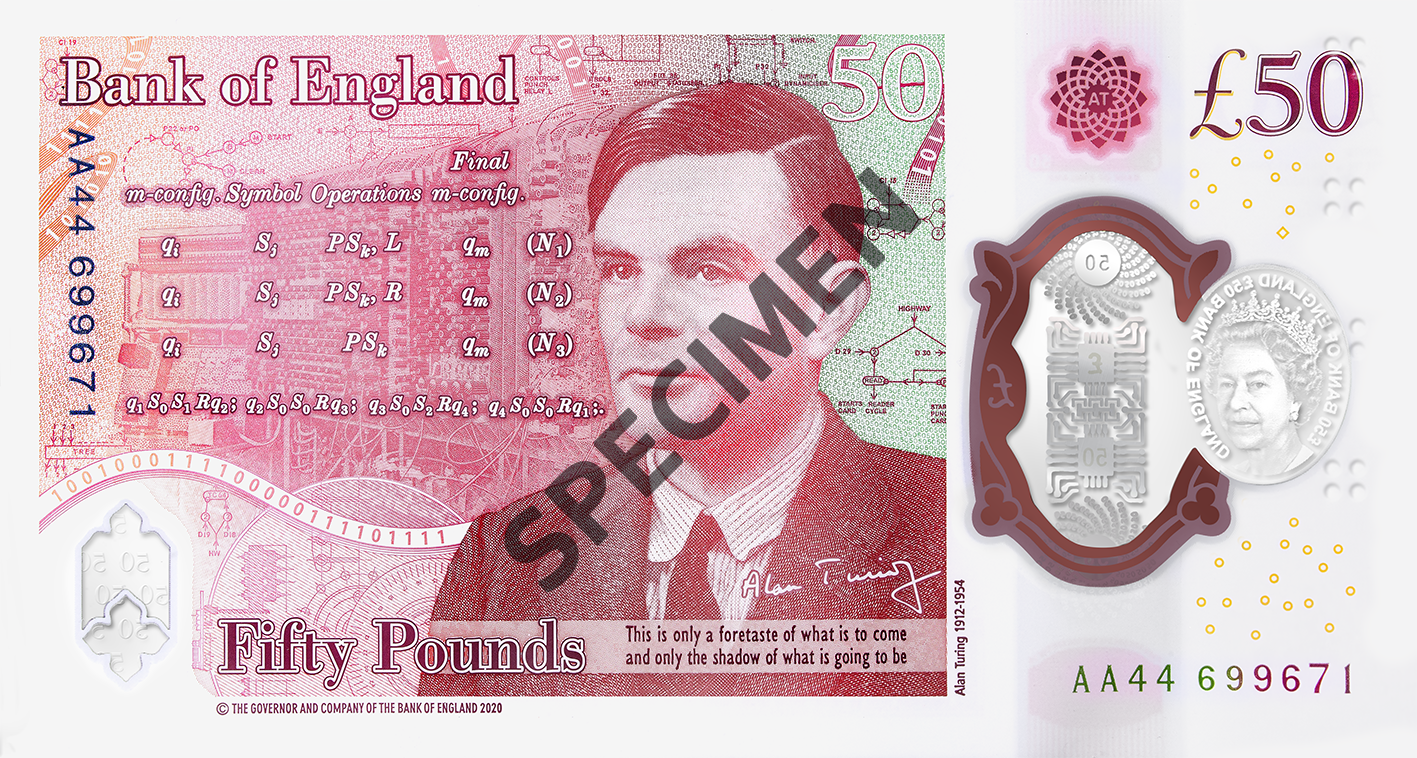News
New £50 note featuring Alan Turing enters circulation

A new £50 note featuring the scientist Alan Turing enters circulation today.
The note is made from polymer, a thin, flexible plastic material – already used on the £5, £10 and £20 notes – and contains advanced security features.
It will start appearing in bank branches and at ATMs in the coming days.
It means all Bank of England banknotes are now available on polymer.
You can use the old £50 note until 30 September 2022. After this date, the paper £50 note and £20 note will no longer be legal tender so you should spend them or deposit them before then.
Turing, who was born in London in 1912, is best known for his codebreaking work at Bletchley Park, which is said to have helped end the Second World War. He was also a pioneer in the field of computer science.
In 1952 he was convicted of gross indecency for having a relationship with a man and sentenced to 12 months of hormone “therapy.” He died of cyanide poisoning in 1954. The official verdict was suicide.
Today would have been Turing’s birthday.
Speaking at Bletchley Park, where Turing carried out his famous codebreaking work, Bank of England Governor Andrew Bailey said: “Our banknotes celebrate some of our country’s most important historical figures. That’s why I am delighted that Alan Turing features on the new polymer £50 note. Having undertaken remarkable codebreaking work here at Bletchley Park during the Second World War, he went on to pioneer work on early computers, as well as making some ground-breaking discoveries in the field of developmental biology.
“He was also gay and was treated appallingly as a result. Placing him on this new banknote is a recognition of his contributions to our society, and a celebration of his remarkable life.”
All polymer banknotes have two key security features: a hologram which changes image and see-through windows.
The new £50 notes, like the polymer £10 and £20 notes, contain a tactile feature to help vision impaired people identify the denomination.